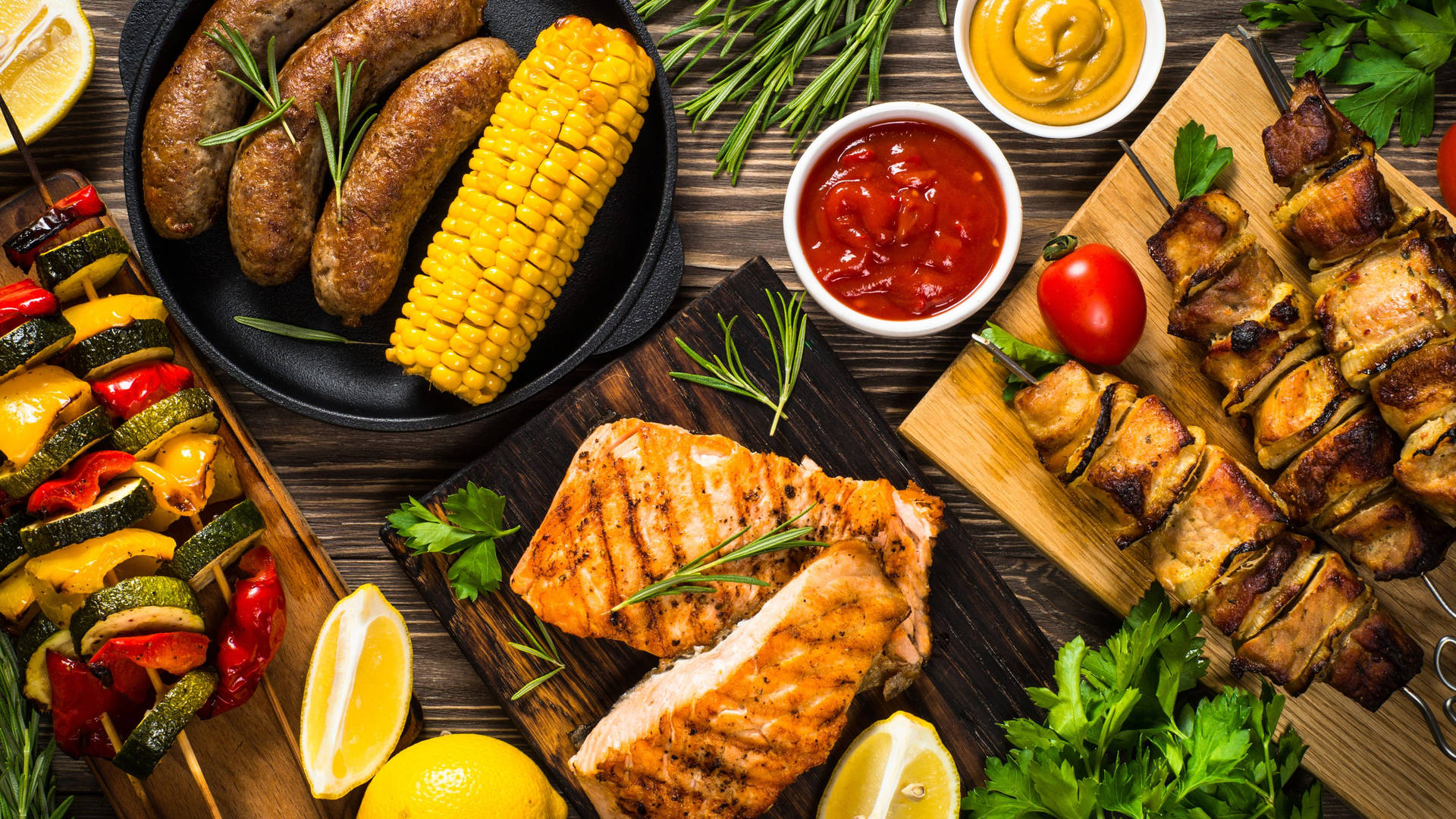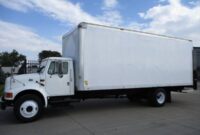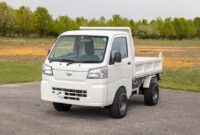Food Truck Deep Fryer: Your Ultimate Guide to Crispy Success on Wheels pickup.truckstrend.com
Introduction: The Heart of Your Mobile Kitchen
In the bustling world of mobile gastronomy, where speed, quality, and flavor are paramount, few pieces of equipment are as indispensable as the deep fryer. For a food truck, the deep fryer isn’t just an appliance; it’s the very heart of the kitchen, enabling a vast array of menu items that range from classic crispy fries and golden-brown chicken tenders to innovative fried desserts and ethnic specialties. A well-chosen and properly maintained food truck deep fryer is crucial for consistency, efficiency, and ultimately, customer satisfaction. It dictates not only the speed at which you can serve but also the delicious crispiness that keeps customers coming back for more. This comprehensive guide will delve into everything you need to know about selecting, operating, and maintaining the perfect deep fryer for your food truck business.
Food Truck Deep Fryer: Your Ultimate Guide to Crispy Success on Wheels
Why a Deep Fryer is Essential for Your Food Truck
The benefits of incorporating a deep fryer into your food truck setup extend far beyond simply offering fried foods. It’s a strategic investment that unlocks significant operational and financial advantages:
- Menu Versatility: A deep fryer immediately expands your menu possibilities. Think beyond just french fries; you can offer onion rings, mozzarella sticks, fried chicken, fish and chips, churros, donuts, falafel, fried pickles, and even unique culinary creations. This versatility allows you to cater to a wider audience and adapt to various events or seasons.
- High Profit Margins: Fried foods are incredibly popular and often have excellent profit margins due to relatively low ingredient costs and high demand. A basket of fries, for instance, can be one of your most profitable items.
- Speed of Service: Deep frying is a rapid cooking method. Once the oil is at temperature, items cook quickly, allowing you to serve customers faster, reduce wait times, and handle higher volumes during peak hours. This efficiency is critical in a fast-paced food truck environment.
- Customer Satisfaction: There’s something universally appealing about hot, crispy, golden-brown fried food. A well-fried product is satisfying and often elicits positive feedback, contributing directly to repeat business and positive word-of-mouth.

Types of Food Truck Deep Fryers
Choosing the right type of fryer is the first critical step. Food truck deep fryers primarily differ in their power source and configuration:
- Propane (LP) Fryers: These are by far the most common choice for food trucks.
- Pros: Highly powerful (measured in BTUs, British Thermal Units), allowing for quick oil recovery after food is added, which is crucial for high-volume frying. They don’t rely on the truck’s electrical system, making them energy-independent.
- Cons: Require propane tanks, which take up space and need to be refilled. Proper ventilation (Type I hood with fire suppression) is mandatory.

- Electric Fryers: While less common as primary fryers for a full-scale food truck operation, they have their place.
- Pros: No need for propane, potentially easier to clean, and some smaller models can be countertop.
- Cons: High wattage requirements mean they often need significant electrical power, which can strain a food truck’s generator or battery system. Slower oil recovery compared to high-BTU gas fryers, making them less ideal for high-volume frying.

- Ventless Fryers: These specialized fryers feature an internal filtration and ventilation system, eliminating the need for a traditional overhead hood.
- Pros: Offer significant flexibility in truck design, as they don’t require the extensive ductwork of a conventional hood system. Can be ideal for trucks with limited overhead space.
- Cons: Generally more expensive than traditional fryers. Capacity can be limited, and they require more frequent cleaning of their internal filters.
- Single vs. Double Pot Fryers:
- Single Pot: Ideal for smaller operations or if your menu only requires one type of fried item. More compact.
- Double Pot: Offers increased capacity and allows you to fry different items simultaneously without flavor transfer (e.g., seafood in one, fries in another). Requires more space and typically more oil.
- Countertop vs. Floor Model:
- Countertop: Smaller capacity, good for supplementary frying or very low-volume operations. Saves floor space.
- Floor Model: Larger capacity, designed for high-volume commercial use. Takes up more floor space but is usually more stable and powerful.
Key Considerations When Choosing Your Deep Fryer
Selecting the right fryer involves balancing performance, safety, and the practical constraints of a mobile kitchen:
- BTU Output (for Gas) / Wattage (for Electric): This is paramount. Higher BTUs (typically 70,000 to 150,000+ BTUs for food trucks) or wattage means faster oil recovery after cold food is dropped in, preventing soggy products and allowing for continuous cooking during rushes.
- Capacity: Measured in pounds of food per hour or gallons of oil. Consider your expected volume. A typical food truck might need a 35-50 lb (4-6 gallon) fryer. If you specialize in fried items, you might need two smaller fryers or one larger one.
- Dimensions & Footprint: Space is a premium in a food truck. Measure your available counter or floor space meticulously. Don’t forget clearance for doors, ventilation, and operator movement.
- Ventilation Requirements: This cannot be stressed enough. A Type I commercial exhaust hood with a fire suppression system is legally required for deep fryers in most jurisdictions. This system extracts grease-laden vapors and activates in case of a fire, protecting your investment and your life. Check local health and fire codes.
- Material (Stainless Steel): Always opt for commercial-grade stainless steel. It’s durable, corrosion-resistant, and easy to clean, which is vital for hygiene in a food truck.
- Safety Features: Look for features like automatic shut-off valves, high-limit thermostats (to prevent oil from overheating dangerously), and cool-touch handles.
- Oil Filtration Systems: Some high-end fryers come with built-in oil filtration systems, which significantly extend oil life, reduce oil consumption, and improve food quality. If not built-in, consider a separate portable oil filter. This investment pays for itself quickly.
- Portability & Mounting: Ensure the fryer can be securely mounted or bolted down within the truck to prevent movement during transit.
Operating and Maintaining Your Food Truck Deep Fryer
Proper operation and rigorous maintenance are non-negotiable for safety, efficiency, and food quality.
- Pre-Operation Checklist: Before every service, check propane levels, oil levels, and ensure the fryer is clean and free of debris. Calibrate the thermostat if possible.
- Temperature Control: Maintain the recommended oil temperature (typically 325-375°F / 160-190°C) for the food you’re frying. Too low, and food becomes greasy; too high, and it burns on the outside while remaining raw inside.
- Oil Management:
- Filtration: Filter your oil at least daily, or even multiple times a day during busy periods. This removes food particles, extends oil life, and maintains food quality.
- Topping Off: As oil is absorbed by food, top off the fryer with fresh oil to maintain the proper level.
- Changing Oil: Change all the oil when it becomes dark, smokes excessively, foams, or imparts off-flavors to food. This could be every few days to a week, depending on usage.
- Cleaning Procedures:
- Daily: Skim oil for food particles, filter oil, wipe down exterior.
- Weekly (or as needed): Drain, clean the oil pot thoroughly, boil-out (using specialized fryer cleaning chemicals) to remove carbonized oil and residue. Rinse thoroughly.
- Safety Protocols:
- Fire Extinguisher: Always have a K-Class fire extinguisher readily accessible and charged. K-Class extinguishers are specifically designed for grease fires.
- Ventilation: Ensure your hood system is always on when the fryer is in operation.
- Never Leave Unattended: Hot oil is a fire hazard. Never leave an active fryer unattended.
- Water and Hot Oil: Never, ever put water near hot oil. It can cause dangerous splattering and flash fires.
- PPE: Use heat-resistant gloves and protective eyewear when cleaning or handling hot oil.
- Troubleshooting Common Issues:
- Soggy Food: Oil temperature too low, overloading the basket, old oil.
- Smoky Oil: Oil too old, temperature too high, food particles burning.
- Uneven Cooking: Overloading, cold spots (rare in good commercial fryers).
Practical Tips for Maximizing Your Fryer’s Potential
- Don’t Overcrowd: Frying too much food at once drops the oil temperature significantly, leading to soggy, greasy results. Fry in small, manageable batches.
- Pat Food Dry: Excess moisture on food causes oil to splatter and rapidly degrades oil quality. Pat frozen or fresh items dry before frying.
- Use High-Quality Oil: Invest in good quality frying oil (e.g., high oleic canola, sunflower, peanut oil). It will last longer and produce better-tasting food.
- Monitor Temperature: Use a separate thermometer to verify your fryer’s thermostat accuracy. Consistent temperature is key.
- Regular Cleaning Schedule: Stick to a strict cleaning schedule. A clean fryer means longer-lasting oil and better-tasting food.
- Staff Training: Ensure all staff operating the fryer are thoroughly trained on its use, maintenance, and emergency procedures.
Food Truck Deep Fryer Price Table
The cost of a food truck deep fryer can vary widely based on its type, capacity, features, and brand. This table provides estimated price ranges for common configurations:
| Fryer Type | Capacity (Oil/Lbs) | BTU/Wattage (Approx.) | Key Features | Estimated Price Range (USD) |
|---|---|---|---|---|
| Propane Floor Model | 35-40 lbs (4-5 gal) | 70,000-90,000 BTU | Single pot, stainless steel, manual controls | $1,200 – $2,500 |
| Propane Floor Model | 50-75 lbs (6-10 gal) | 100,000-150,000 BTU | Single pot, high-recovery, stainless steel | $2,000 – $4,000 |
| Propane Double Pot | 2 x 35 lbs (2 x 4 gal) | 140,000-180,000 BTU | Dual pots, independent controls, high recovery | $3,500 – $6,000 |
| Electric Countertop | 10-20 lbs (1-2.5 gal) | 3,000-6,000 Watts | Compact, ideal for light duty/specialty items | $300 – $1,000 |
| Ventless Fryer | 20-40 lbs (2.5-5 gal) | Varies (Electric/Gas) | Built-in filtration & ventilation, fire suppression | $7,000 – $15,000+ |
| Fryer with Built-in Filter | 50-75 lbs (6-10 gal) | 120,000-180,000 BTU | Integrated oil filtration system, stainless steel | $4,500 – $8,000+ |
Note: Prices are estimates and can vary significantly based on brand, features, supplier, and market conditions. Installation costs, propane tanks, and fire suppression systems are typically separate expenses.
Frequently Asked Questions (FAQ)
Q1: How often should I change my food truck fryer oil?
A1: It depends heavily on usage. For busy food trucks, oil should be filtered daily, and completely changed every 3-7 days. Signs it needs changing include excessive foaming, dark color, smoky appearance at normal temperatures, or a rancid smell/taste.
Q2: What’s the best type of oil for a food truck fryer?
A2: High-oleic canola oil, sunflower oil, or peanut oil are popular choices due to their high smoke points and neutral flavor. Blended vegetable oils designed for deep frying are also common. Avoid olive oil or butter for deep frying due to low smoke points.
Q3: Do I need a fire suppression system for my food truck fryer?
A3: Absolutely, yes. In almost all jurisdictions, a Type I commercial exhaust hood with an integrated fire suppression system is legally required for deep fryers in commercial kitchens, including food trucks. This is critical for safety and insurance.
Q4: Can I use an electric fryer in a food truck?
A4: While possible, electric fryers are less common for primary, high-volume frying in food trucks due to their high electrical demands. They can quickly drain generators or require significant shore power. They are better suited for light-duty frying or as a secondary fryer for specific items.
Q5: What BTU output do I need for a food truck propane fryer?
A5: For efficient, high-volume food truck operations, aim for a fryer with at least 70,000-90,000 BTUs for a single 35-40 lb pot. For larger capacity or dual-pot fryers, you’ll need 100,000 BTUs or more per pot to ensure quick oil recovery and consistent results.
Conclusion: The Foundation of Your Fried Fare
The deep fryer is undeniably one of the most critical pieces of equipment in any successful food truck. It’s the engine that powers your menu’s most popular items, drives profitability, and ensures customer satisfaction. By understanding the different types available, carefully considering key factors like BTU output and ventilation requirements, and committing to diligent operation and maintenance, you can transform your fryer from a simple appliance into a powerful asset. A well-chosen, expertly operated, and meticulously maintained deep fryer is not just an investment in equipment; it’s an investment in the crispy, golden future of your food truck business, ensuring you consistently deliver the delicious fried perfection your customers crave.



